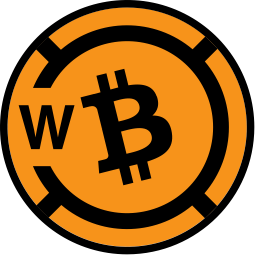Wrapped tokens are assets that enable the transfer of the value of a native asset from one blockchain to another. Wrapped Bitcoin is among the most well-known wrapped tokens (WBTC). WBTC is connected to the price of Bitcoin (BTC), therefore one WBTC should always be equivalent to one BTC. Unlike Bitcoin, however, WBTC is accessible as ERC-20 or TRC-20 tokens, making it usable and tradable on the Ethereum and Tron blockchains.
Wrapped tokens resemble stablecoins such as USDT, which track the value of the U.S. dollar. Similar to how one WBTC is tied to the value of one BTC, one USDT is tied to the value of $1.
What distinguishes a wrapped token from an unwrapped token is not only the fact that it is linked 1:1 to the price of another asset. It is the underlying technology and the manner in which its value is supported and maintained.
How do wrapped tokens work?
The “minting” and “burning” processes are used to produce and destroy wrapped tokens. In order to mint a wrapped token like WBTC, the underlying asset, in this case BTC, is transmitted to a custodian who keeps the BTC in a digital vault. Once the underlying BTC has been secured, a corresponding quantity of WBTC can be created.
This procedure is also known as “wrapping.” Using a smart contract, the underlying asset is “wrapped up” in a digital vault, and a newly wrapped asset is created for usage on another blockchain. To destroy WBTC, the operation is repeated in reverse. The WBTC is withdrawn from circulation, and the same amount of BTC is freed from the digital vault and allowed to circulate again.
Similarly to how minting wrapped tokens may be viewed as “wrapping” the underlying asset in order to produce a token of similar value for usage on another blockchain, burning wrapped tokens can be viewed as “unwrapping” the underlying asset.
This process of minting and burning, or wrapping and unwrapping, ensures that all wrapped tokens, including WBTC and renDOGE (a wrapped variant of Dogecoin), are backed by an equal quantity of their underlying currency. The value of the wrapped token is backed by 100 DOGE for every 100 renDOGE that have been issued.
What’s so special about wrapped tokens?
Wrapped tokens, like WBTC, facilitate cross-blockchain asset transfers and access to third-party blockchain features and apps. Potential benefits include expedited transactions, reduced costs, and increased crop yields.
As the number of WBTC in circulation has grown, so too have the number of “bridges” that enable users to “wrap” their own tokens and transfer them across other blockchains.
The security of bridges has been breached in the past, and Ethereum co-creator Vitalik Buterin expressed his “pessimism regarding cross-chain applications” in January 2022.
The future of wrapped tokens
The industry has a hurdle in trying to make all blockchains compatible with one another. One issue is that, as more blockchains appear, an exponentially growing number of bridges are required to make it possible for assets on one blockchain to be transferred to all other blockchains without any difficulty.
In an effort to streamline the process of transferring assets between blockchains, many solutions are now being development. At least for the near future, bridges and wrapped tokens will remain an integral element of the solution for interoperability.






